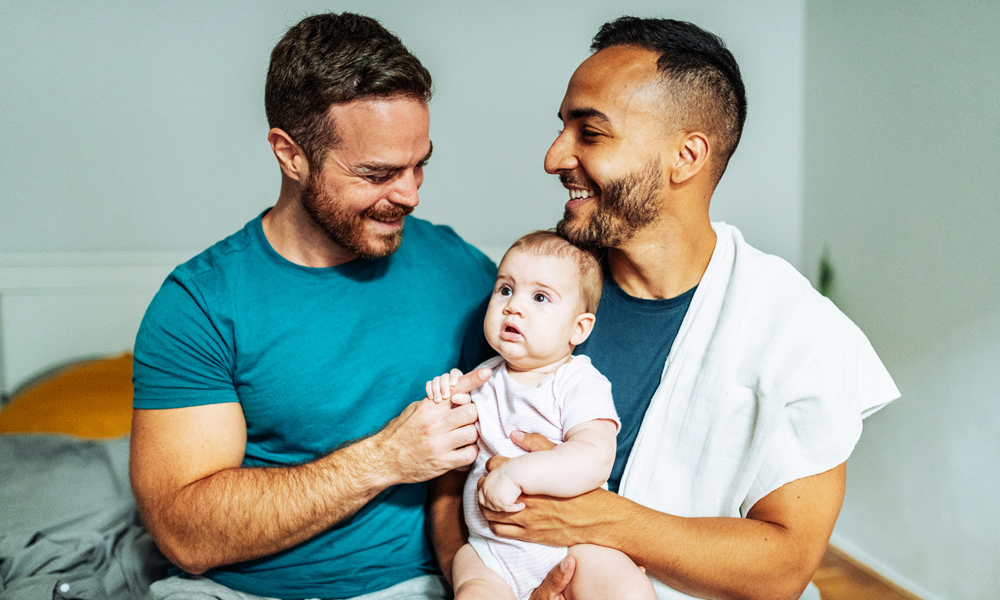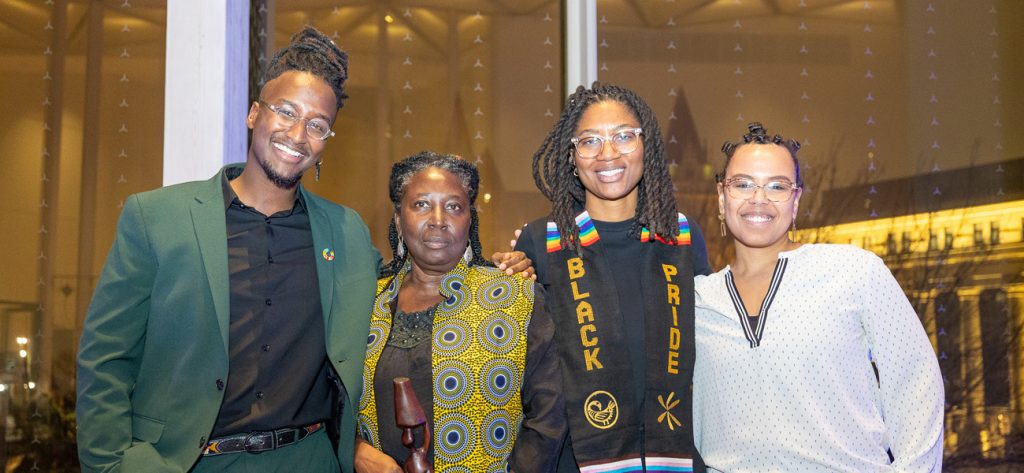Anova Fertility and Reproductive Health’s Dr. Marjorie Dixon breaks down the steps in the 2SLGBTQI+ journey to parenthood…
For any queer couple thinking about having children, there comes a moment when the idea transforms from an inkling to a serious discussion. To ward off feelings of panic, and successfully navigate a sometimes-complicated process to achieve the dream, it helps to break the journey into steps.
1. Learn about all the options
While all potential parents must consider the ifs and whens of starting a family, most same-sex couples must also grapple with the how. That includes deciding whether to pursue adoption, in-vitro fertilization (IVF), intrauterine insemination (IUI), egg donation and gestational surrogacy – each of which comes with their own variations. Choosing the best path requires consideration of what’s important to each person in the relationship: their values, their shared timelines and life goals, the roles they will play in starting a family, and how they see the structure and bonds in their newly configured family. It takes good planning, lots of patience and research.
“Education is key,” says Dr. Marjorie Dixon, founder, CEO and medical director of Anova Fertility and Reproductive Health, which operates four clinics in southern Ontario. “Knowledge will help with any anxiety and doubt. It’s a human rights issue: every individual has a right to create a family.”
The first step in that education is exploring what options are available. Those options may not be what couples expect. Some of the stereotypes about the difficulty of starting a queer family no longer hold up, says Dixon. With more than 20 years in the field, and seven years since she founded Anova, she’s seen many changes in the technology and policies available to provide queer couples with access to fertility treatments.
On the medical side, improvements in endocrinology and screening not only make the process more reliable, but allow doctors to, for example, look for genetic mutations like those that cause cystic fibrosis. Even improvements in communication technology have contributed to streamlining the journey. For couples in small towns seeking to create a family through surrogacy, for example, many of the necessary meetings and interviews can be done remotely through videoconferencing. “It’s much less cumbersome,” she says.
Medical advances also help provide more choices. Techniques like reciprocal IVF, which is possible when both partners have eggs and/or uteruses, allow one partner to form an embryo created with donor sperm, while the other partner receives that embryo and carries the pregnancy, a path that can increase the feeling of a shared experience.
“You will see couples who start with a discussion where they’ll tell each other, ‘I want to carry a baby,’ or ‘I don’t want to carry a baby,” says Dixon.
2. Make sure both partners are on the same page
Different medical paths require different personal considerations, some of which can be emotional and built on the values of each individual. When do we want to grow the family and when do we have to start to work towards making that happen? How much time are we prepared to wait? In the case of donated sperm, do the parents want to know the identity of the donor and what will the relationship of the donor be to the family? In the case of surrogacy, what kind of relationship do the parents want with the surrogate, and between the child and the surrogate?
“You want to control what is controllable, but keep in mind that there are many variables,” Dixon says.
3. Consider legal aspects
Because there are legal implications around many of these decisions, particularly surrogacy, Dixon suggests working from the outset with a certified fertility lawyer, who can explain the legal framework that will direct the decision-making. Canada does not restrict surrogacy services to married, heterosexual couples; intended parents are easily granted legal parental rights. Though surrogacy in Canada must be altruistic (money can be paid only for expenses, not the service itself), there are systems and services that make it accessible to queer couples. Yet the policy framework is always evolving and there is definitely room for improvement to better accommodate LGBTQ2SIA families. “The good news ia that these laws deepen the relationship and protect all parties,” she says. “But the regulations by Health Canada must have these checks and balances.”
4. Find the right healthcare partners
Though these are such personal issues to wrestle with, healthcare professionals take on a central role in the discussion, which is yet another consideration for same-sex and queer parents. The attitudes of healthcare practitioners towards LGBTQ2SIA+ people have changed dramatically over the last couple of decades. Yet many fertility clinics remain focused on straight couples: one report, according to the New York Times, suggests that self-identifying LGBTQ+ people make up just between five per cent and 10 per cent of fertility-clinic patients in the United States. And it was just last year that Nova Scotia dropped a consultation fee for same-sex couples and single people seeking fertility help.
Finding a clinic with practitioners who can speak the language of queer couples in a judgment-free way can be a key factor in the journey. “If a doctor is not welcoming, that can be off-putting and triggering,” says Dixon, who is herself a member of the LGBTQ2SIA+ community. Earlier this year, she and Anova launched a collaboration with Pride Parenthood, a program that aims to make the journey to parenthood more attainable for the LGBTQ2SIA+ community by supporting third-party assisted reproduction.
5. Get your financial ducks in a row
Finances, of course, are a consideration, and it can be especially daunting when there is no guaranteed outcome, says Dixon. Employee benefit plans are increasingly likely to cover fertility treatment for queer couples – although, in Canada, the median amount of coverage is about $3,500 while a standard IVF process can cost $25,000 (surrogacy costs even more). Considering the commitment required for parenthood – queer or otherwise – every little policy change can make a difference. For example, CTV News reported in March that the federal government has promised to reform the Employment Insurance system to provide a new parental benefit to parents who adopt or who grow their families with the help of a surrogate.
There have also been ongoing lobbying efforts to make coverage more equitable for LGBTQ2SIA+ families. Over time, benefits packages are likely to be more inclusive. “Anova is working on benefits companies,” says Dixon. ‘We’re telling them: ‘If you guys are saying you’re not discriminating against our community, then how are these amounts fair?”
Parenthood certainly isn’t easy at the best of times, and assisted reproduction adds another level of complexity. Being prepared beforehand can make it all a little less daunting…and will help you survive the process.
For more information about beginning your pathway to parenthood, please visit prideparenthood.com.






POST A COMMENT